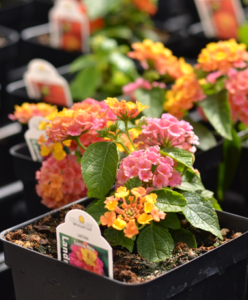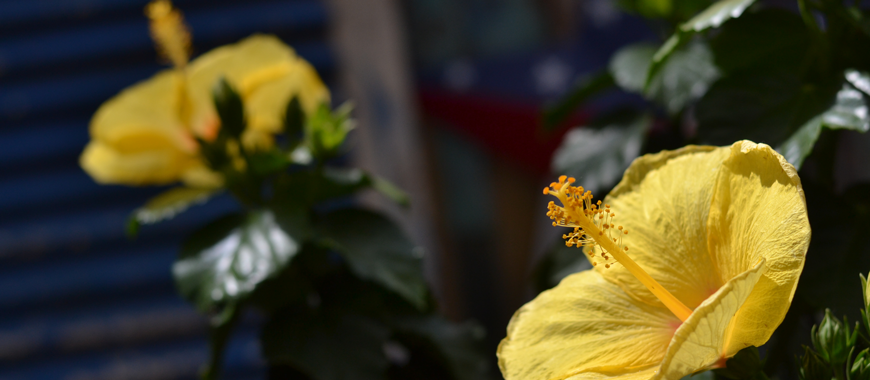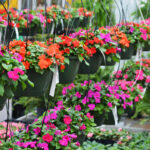Pots filled with blooming annuals are always the go-to when decorating patios, but tropicals are also a great option when wanting to add color and texture to your patio. Tropicals may be one of those plant classes that you look at in the greenhouse but quickly shy away from. You may feel they’re too big, too exotic looking, or too pricey. Those are all good concerns but let us help you take the plunge and include them in your patio decor this spring!
First, we consider tropicals to be woody or non-wood plants that are not hardy in South Dakota. So, while many of them are hardy to zone 8 or 9, for our area we also consider some zone 5 plants as tropical. Tropicals will grow to a variety of sizes, whether you are looking for a plant to grow 2 feet or 8 feet, there is a plant for you. Yes, tropicals can look exotic and as a result hard to grow, but tropicals can be very easy to grow, with a little more regular fertilization, watering and light insect scouting! Pricey can be correct depending on the size of the plant but remember the bigger the plant means it is older! Many of our tropical customers will overwinter their tropicals year to year as well which brings the yearly average down dramatically!
Check out some of our favorite tropicals!
Hibiscus
Our most common tropical. These large flowers flower periodically throughout the summer. Outdoor temps should be above 45 degrees, or they should be covered or brought inside. Fertilize with Fertilome Rose and Flower Food with Systemic Insecticide once every 6 weeks to keep aphids at bay and also supplement with Fertilome Blooming and Rooting for regular flowering initiation. Hibiscus like to stay watered so do not allow them to dry out significantly between watering. At least 6 hours of sunlight is required.

Mandevilla
These guys get large but are so worth it! This plant grows as a vine, so you can potentially control its size but keep the vine trimmed. The flowers typically are red, white or pink. Flowering is typically throughout the entire summer season. Keep at temps above 45 degrees. Overwintering is a possibility If you have room for it. Fertilize with Fertilome Rose and Flower Food with Systemic Insecticide once every 6 weeks to keep insects at bay. Regular watering to avoid drying out is beneficial.

Sago Palm
Use as either a houseplant or outdoor tropical. This plant will not flower but grows stiff branches and leaves. This plant dates to prehistoric times and is so cool to grow! The best results in this area have been to provide a little afternoon shade early afternoon. Water semi-regular, but do not overwater. Occasionally fertilizer is required.
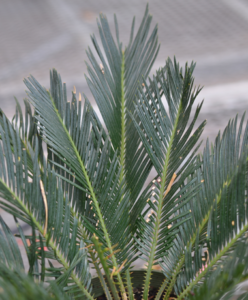
Jasmine
Another vining tropical that is always a favorite. Place this daintily flowered plant near frequently used doors or windows to enjoy the sweet scent. Jasmine will typically flower most of the season, but there will be periods of bud rejuvenation. Fertilize with Fertilome Rose and Flower Food with Systemic Insecticide once every 6 weeks to keep insects at bay and supplement with Fertilome Blooming and Rooting for regular flowering initiation. Regular watering is required for Jasmine.
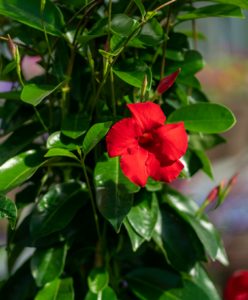
Lantana
We always have lantana in our annual greenhouse. However, if grown for several years, lantana will form a large bush or tree! We love to feature our lantana trees in large pots to enjoy the flowers throughout the growing season. Lantana is a very easy plan to grow, however, we do suggest deadheading them (which can take a while) to encourage new flower buds. Fertilize with Fertilome Rose and Flower Food with Systemic Insecticide once every 6 weeks to keep insects at bay and supplement with Fertilome Blooming and Rooting for regular flowering initiation.
